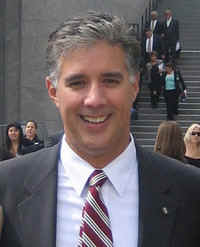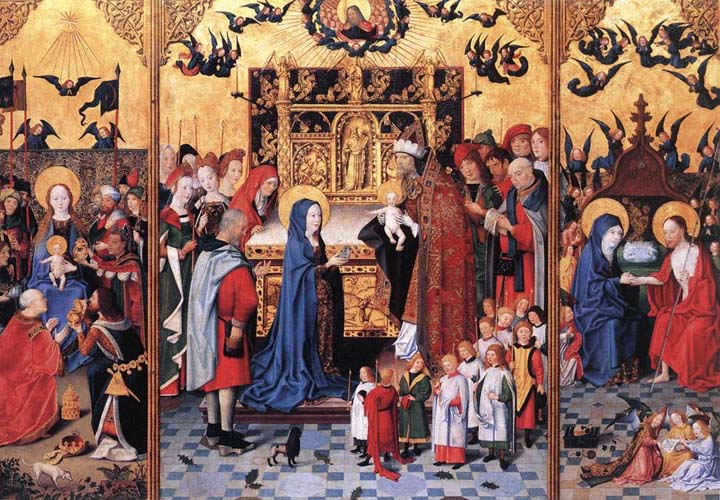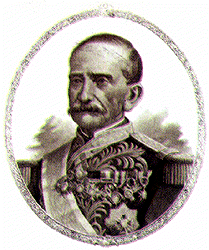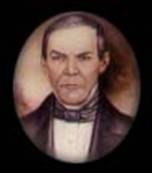“He was the type of man who, if he had a dollar to his name,
he’d give it to you if you needed it,” says his son Alex
Jr.
After a couple of minutes, a dazed Joseph approached his older
half-sister Irene. The Observer reporter had told
Joseph that his father was a civil-rights icon, someone who
stood up to white neighbors during the 1940s when they
unsuccessfully sued him and his wife solely for being Mexicans
who bought a house in their tract. A pioneer whose case was a
turning point in the battles against school and housing
segregation in Orange County and the United States. A hero who
fought for his rights, who did things for everyone, did what
was right and never gave up.
Joseph was shocked. Racism? Segregation? Against Mexicans? In
Orange County? The younger Bernals had never experienced such
nastiness, let alone heard of it. Irene confirmed the story
but couldn’t share more—it was time for the family to
grieve.
Days after Alex Bernal’s burial, Irene gave Patricia a dusty
album of documents that her father had stowed away for
decades. Patricia, who worked for a legal service, scanned
hundreds of brittle, yellowing pages, made CDs and distributed
them to the family. The Bernals read them over the next couple
of weeks and learned of a secret past Alex kept from his
children for decades, an episode that fundamentally changed
the course of American civil rights.
Alejandro Bernal was born in Corona in 1914. His mother was
from the Mexican state of Aguascalientes, his father an
Arizonan with Spanish heritage. The Bernals moved to Fullerton
shortly after that; Alex stayed there, save a couple of years,
for the rest of his life. Unknown to them, they were setting
roots in a city that was already hostile to the idea that the
thousands of Mexicans who worked Fullerton’s bountiful
orchards, canneries and fields also wanted to live there. In
1915, for instance, residents demanded that the city’s
police department block Mexicans from leaving their houses
after an outbreak of scarlet fever, according to Fullerton
planning commission minutes. Four years later, hundreds of
residents protested at a city council meeting after learning
that the Santa Fe railroad planned to build housing for its
Mexican workers near the company’s tracks.
In those days, Mexican children were actively discouraged from
attending school by white teachers and administrators; Bernal
attended St. Mary’s Catholic Church’s elementary for a
couple of years, but he never advanced past that. After
working in the fields through his teens, he saved money and
bought a truck that he used to transport produce across
Southern California. He lived with his parents on Truslow
Avenue, the heart of Fullerton’s Mexican barrio. Just down
the street stood the Sunnyside development, created in the
1920s as Fullerton’s latest neighborhood, a collection of
charming Mission- and Craftsman-style homes.
“Daddy was that way,” says Maria Theresa, now in her 60s,
with the excitable energy of someone half her age.
“He tried
to improve himself, always. He probably didn’t see moving
into the neighborhood as anything important—he just wanted a
better neighborhood for us.”
Written into the deeds of all Sunnyside lots was a clause that
read, “No portion of said property shall at any time be
used, leased, owned or occupied by any Mexicans or person
other than of the Caucasian race.” Sunnyside was just one of
hundreds of neighborhoods in Southern California that enforced
such housing covenants in an attempt to keep the region’s
burgeoning minority population segregated from whites. Undeterred, the Bernals decided to stay.
Within a week, someone broke into the house and threw the
Bernals’ belongings onto the street. Soon, everyone else in
the neighborhood—50 people in total—signed a petition
asking the Bernals to move. When that didn’t work, the
neighbors hired lawyer Guss Hagenstein to file an injunction
against the Bernals and force their removal from their house.
On April 30, barely a month after the Bernals had moved in, an
Orange County sheriff’s deputy posted on their front door a
summons to appear in Orange County Superior Court.
* * *
The lawsuit—filed by Sunnyside residents Ashley and Anna
Doss, Oliver and Virginia Schrunk, and Charles and Marjorie
Hobson on behalf of their neighbors—explained they were
“informed and believe” that the Bernals “are both
persons known as Mexicans” who lived on their street. As a
result, they claimed, the Bernals caused “irreparable
injury” to the neighborhood by “lowering . . . the class
of persons” and “social living standard,” and that
allowing the Bernals to stay would lead to other minorities
coming in, which “would necessitate coming in contact with
said other races, including Mexicans, in a social and
neighborhood manner.” The plaintiffs asked the court to ban
the Bernals from living in their own home. Also listed in the
suit: John and Jane Doe and Richard and Mary Roe, unnamed
Mexicans the plaintiffs insisted also lived at the Bernal
residence.
Instead of leaving, the Bernals hired Los Angeles attorney
David C. Marcus. The child of a Jewish immigrant from the
country of Georgia (in what was then the Russian empire),
Marcus already represented the Mexican consul in Los Angeles
on various matters. The lawyer crafted a legal argument that
had never succeeded in an American courtroom: that Mexicans
were subject to the equal protection clause of the 14th
Amendment of the United States Constitution and that housing
covenants violated both the 14th Amendment and the due-process
clause of the Fifth Amendment.
The Bernals’ case seemed doomed from the start. Court
records indicate that a Judge Morrison issued a ruling against
the Bernals, but Marcus successfully petitioned to have
another judge brought in all the way from Shasta County:
Albert F. Ross. The case was tied up in legal wrangling, with
Hagenstein seeking an immediate injunction with no trial and
Marcus wanting it heard before a judge. All the while, to
spare the young family more indignities, they lived with
Alex’s mother, Ramona, in her Truslow Avenue home.
Doss, et al. v. Bernal, et al. was finally heard in
late August 1943. Hagenstein brought in real-estate appraisers
who testified that having Mexicans live in a neighborhood
brought down property values by at least half and
anthropologists who claimed Mexicans were not Caucasians. He
tried to establish that the Bernals moved in with full
knowledge of the covenants and that they had allowed “other
persons who are Mexicans” to live with them. It wasn’t
racist to not want Mexicans in Sunnyside, Hagenstein
maintained; it was common sense.
The plaintiffs parroted Hagenstein’s strategy. According to
a trial transcript, Charles Hobson insisted in a deposition he
wasn’t racist against Mexicans; he simply wanted to protect
his property value. “It isn’t my opinion,” the mechanic
said when Marcus pressed him to prove that Mexicans brought
down home values. “Take a look at Placentia for yourself.”
Marcus’ courtroom actions are largely unknown; records are
missing, but a short newspaper clipping quoted him as stating
in closing arguments that the action of Bernal’s neighbors
“was taken from Hitler’s Mein Kampf.”
Depositions show that Marcus objected to Hagenstein’s
badgering of Esther when he kept insisting that the Bernals
had allowed other Mexicans to live with them, charges Esther
strenuously denied. And in one heated exchange, after
Hagenstein ridiculed Marcus’ line of questioning, Marcus
snapped, “You keep your remarks to yourself, and let’s not
get personal about it. Whether I get myself into a jam and
whether I want to extricate myself, that is my affair.”
Ross issued his ruling on Aug. 23, after four days of
testimony from the two sides: The Bernals could stay in their
house, and the plaintiffs had to pay their legal fees. Ross
wrote in an opinion that housing covenants “have a tendency
to be . . . injurious to the public good and society;
violative of the fundamental form and concepts of democratic
principles” and that he agreed with Marcus’ contention
that such discrimination violated the Fifth and 14th
amendments. Taking note of the ethnic stock of most of
Sunnyside’s residents, Ross gave them a dose of their own
venom. “I do feel there is a paranoia among the German
people,” he remarked in court. “I don’t think Hitler is
the only one. I would rather have people of the type of the
Bernals living next door to me than Germans of the paranoiac
type now living in Germany.”
The local press didn’t pay attention to Bernal’s victory;
the Fullerton News-Tribune devoted just a 200-word
story to the ruling. But the Bernal case received
international attention. The Mexican consul, noting the Good
Neighbor Policy between Mexico and the United States at the
time, said the decision “proved that the politics of
inter-American rapprochement isn’t an utopia, but a
reality.” United Press put the story on its wire, and Time
wrote a brief report complete with pictures of a suited Alex,
his wife, and daughters Maria Theresa and Irene, everyone
smiling—the all-American family that had “moved across the
tracks to stay.” Time also dramatized the Bernal
story in its nationally syndicated radio program, March of
Time. And the case even received mention in American
Me, a 1949 book that was one of the first positive
portrayals of Mexicans in American publishing.
Meanwhile, a Los Angeles-based African-American weekly, the California
Eagle, splashed the Bernal decision across its front
page, with headlines proclaiming, “California Judge Jolts
Nation,” “Race Property Bars Held Illegal!” and “Race
Housing Bars are Falling!” The Eagle, along with
other African-American organizations, had long tried
unsuccessfully to fight housing covenants in Los Angeles
against blacks; the newspaper saw the Bernal victory as
crucial to its cause, contrasting it to the “stolid silence
of city and county officials concerning race restrictions on
the city’s housing.”
“This decision,” the paper concluded, “may be an
important instrument in helping to solve the serious
wartime-housing situation in the Los Angeles area as it
applies to Mexicans and especially to Negro people.”
But the case wasn’t finished. On Sept. 20, Hagenstein filed
a motion taking exception to Ross’ ruling. He argued that
the 14th Amendment didn’t apply to the Bernals, as they were
Mexicans, and mentioned again that Mexicans would bring down
housing prices. Two weeks later, he filed another motion, now
seeking to vacate Ross’ decision; Hagenstein cited case
precedents in arguing for the legality of housing covenants.
The judge was not swayed. In his final ruling on Nov. 15, Ross
wrote that he felt that if he enforced housing covenants, a
higher court would eventually find them unconstitutional. His
bigger concern, however, was that it was against the
philosophy “of the United States and of the state of
California to enforce a restriction on occupancy based solely
on nationality of the persons against whom the restrictions
are sought. This is especially true when the nationality
affected is that of a friendly neighbor and when one
particular nationality is named.”
* * *
In April 1967, Los Angeles County Superior Court Judge Loren
Miller sat down for an interview with Lawrence de Graaf that
is now part of the collection at Cal State Fullerton’s
Center for Oral and Public History. Miller would pass away a
couple of months later, but he was already a legendary figure
in the civil-rights movement for attacking the very sort of
housing covenants that Bernal and Marcus had defeated 25 years
earlier. It was Miller who, along with future Supreme Court
Justice Thurgood Marshall, in 1948 successfully argued Shelley
v. Kraemer before the nation’s highest court, a
decision that ended housing covenants nationwide. It was
Miller who brought national attention to the issue in 1945
with what’s commonly called the Sugar Hill case; like Doss
v. Bernal, it involved white neighbors suing to remove
African-Americans from their neighborhood, in this instance
African-American movie stars such as Hattie McDaniel and Ethel
Waters who lived in the West Adams district of Los Angeles.
And it was Miller who had argued the successful California
Supreme Court appeal of Fairchild v. Raines, a 1944
case involving a Pasadena African-American family that
historians usually cite as the first legal finding against
housing covenants.
Miller was also a historian of civil-rights lawsuits—his
1966 book, The Petitioners: The Story of the Supreme Court
of the United States and the Negro, is a beautifully
written chronology of the African-American legal experience.
The judge knew the importance of the cases he had tried as a
lawyer. But ever the humble judicial officer, he told de Graaf
that it was the judge in the Sugar Hill case, Thurmond Clarke,
who deserved the most credit for ending housing covenants, as
he claimed that the decision was the first time someone had
successfully cited the 14th Amendment in fighting segregation
in the courts. “Unfortunately for him and for his place in
history,” said Miller, the case didn’t go further than Los
Angeles Superior Court. “[Clarke is] entitled to a great
deal of credit for his courage and his foresight in looking
ahead and correctly gauging the trend of constitutional
decisions.”
But Miller was wrong—it was Doss v. Bernal that
first successfully argued against housing covenants. There’s
no suggestion in Miller’s papers, held at the Huntington
Library in San Marino, that he ever heard of the case or used
it as legal precedent in his anti-segregation lawsuits,
despite the widespread publicity at the time of the decision
in Southern California’s African-American community.
Nevertheless, the Bernal case did create a civil-rights tidal
wave. In the fall of 1943, a group of Mexican parents in San
Bernardino decided to sue the city because it allowed Mexicans
and African-Americans to swim in the public pool only on the
day before workers cleaned it. Their lawyer, Marcus,
successfully argued
Lopez v. Seccombe in federal
district court in 1945, again using the Fifth and 14th
amendments as his legal hammers against segregation. The
publicity for this case convinced a group of Mexican parents
in Orange County to hire Marcus for their lawsuit challenging
school segregation in Orange County;
Mendez, et al. v.
Westminster, et al. preceded the more-famous
Brown v.
Board of Education by a decade (see “
Separate
But Unequal,” Nov. 6, 2009). They found Marcus after
Bernal had passed along the attorney’s card to a fellow
produce-truck driver. Filing an amicus curiae brief on behalf
of
Mendez, et al. once that case reached a federal
appeals court was none other than Miller.
Despite its achievement, Doss v. Bernal disappeared
from history, never making it into legal proceedings to be
cited as precedent, not even in Hernandez v. Texas,
the 1954 Supreme Court decision that found Mexicans were
afforded protection from discrimination under the 14th
Amendment. It’s in a few academic books, usually garnering a
sentence, maybe two. No Orange County history book mentions
it, and no historian the Weekly contacted for this
story had ever heard of the case.
The case’s biggest champion has been Luis F. Fernandez, a
graduate student at Cal State Fullerton who will receive his
master’s degree in history this month. In preparation last
year for the comprehensive exams that were part of his
graduation requirements, he learned about the Bernal case in a
book called Labor Rights Are Civil Rights: Mexican
American Workers in Twentieth-Century America. The
discovery of the Bernal proceedings “blew me away,” says
Fernandez, a Garden Grove native. He shared the find with his
fellow graduate students—none of whom believed that housing
covenants against Mexicans ever existed in Orange County.
Fernandez has researched the case intermittently since, hoping
to publish a scholarly paper on the case and eventually do a
book about the segregation Mexicans faced in Orange County.
“I want to show that Mexicans were not docile or passive, as
historically portrayed, but rather resisted,” he says.
“It’s amazing no one picked up the Bernal case, but it’s
typical Orange County: It’s one of those stories that show
we imagine a different community than it really was.”
* * *
Part of its uncelebrated status is attributable to Bernal
himself. He never lived in the Sunnyside house after the case
was decided. Just two years later, Esther died of cancer at
29. A heartbroken Alex kept the house, but he moved in with
his mother and rented out his property. Once his daughters
were older, he bought another house in Fullerton. He sold the
Sunnyside property in 1965; the neighborhood is now almost
exclusively Latino.
“It was a very traumatic experience for Dad,” says Irene,
who seems every bit the sweet woman her shock of white hair
and granny spectacles would suggest. “He never talked about
it to anyone.”
One day, as teens, she and Maria Theresa joined their father
on a visit to the Sunnyside house. While looking through their
late mother’s jewelry in the garage, the two came across an
album with letters and documents. They asked about their
father about the album—the very album Irene would present to
her young siblings decades later. “We kind of knew they had
trouble with the house, but he held the story from us,”
Irene says. “That day, Dad told me the whole story.”
He never mentioned the case to Irene or Maria Theresa again.
Life moved on. Irene herself experienced housing
discrimination during the 1960s when she tried to rent an
apartment in Fullerton despite her light skin; when she sent
her white husband to do the same, the young couple got it with
no problems.
Maria Theresa married a man who lived across the street from
the son of Virginia Schrunk, one of the plaintiffs who had
sued the Bernals. She didn’t mind. “You can’t hold
something against a son who didn’t do what was done,” she
says.
Bernal married for the third time in 1970 and started a new
family. (A second marriage ended in divorce.) He never told
them about the housing discrimination case, either. They knew
Marcus, as he had become a family friend, and they knew Bernal
carried the attorney’s business cards all the time in case
someone needed a lawyer. They also knew Bernal admired Marcus
so much that he named a son after him. “He always had the
nicest things to say about Marcus,” says his widow, Maria,
in Spanish. “That he was a great man who fought for
Mexicans.” Bernal also discussed the case with her once, she
says, just mentioning how stressful the experience was and
nothing else.
In his later years, family friends would find Bernal walking
the streets of his old neighborhood, asking anyone who would
listen that he needed to go home—to the house on Ash Avenue.
He eventually succumbed to pneumonia and Alzheimer’s disease
at age 84 on Jan. 3, 1999.
A couple of days later, the Fullerton Observer called
his family.
* * *
“We care about fair housing and all things that have to do
with diversity,” says Sharon Kennedy, editor of the
twice-monthly Observer. She speaks from experience:
As a small girl, she remembers accompanying her parents during
the early 1950s as they gathered signatures in support of a
Chinese family who had moved into their Fullerton neighborhood
and were experiencing racism. Her brother Rusty Kennedy heads
the Orange County Human Relations Commission. And their
parents were among the founders of the Orange County Fair
Housing Council, which helped African-Americans battle housing
discrimination in the county during the mid-1960s; one of the
couples the organization helped was Lincoln and Dorothy Mulkey,
who were denied an apartment in Santa Ana because they were
black. Their lawsuit, Mulkey v. Reitman, went all the
way to the United States Supreme Court in 1967, where a
majority ruled housing discrimination against renters was
illegal, the last significant victory in a battle that began
with the Bernals.
Kennedy hadn’t heard about Bernal until a writer—she
can’t remember who—pitched an obituary on him. “This man
was so courageous,” she says. “To forget about him was
terrible.” She liked the article, but the editor in her
asked the reporter to follow up with the Bernal children for
comment.
Joseph still remembers that day. “It was surreal,” says
the skinny 27-year-old who sports a buzz Mohawk. “I didn’t
know anything that the reporter was talking about. Eventually,
all I could do was a short essay expressing my love for
Dad.”
The Observer printed Joseph’s essay and the
obituary in January 1999. “We can thank the Bernals for
standing up for their rights to live where they wished and for
bringing awareness of [housing covenants] to the surface”
years before anyone else, the Observer reported.
“The Bernals and their lawyers and friends showed the
way.”
After the Bernals buried their patriarch at Loma Vista
Cemetery in Fullerton, they sat down to read his files. They
found newspaper dispatches, court documents, depositions and
letters—dozens of them, all congratulatory, from all over
the United States—but none from Orange County. Housewives,
professors, ministers and teenagers wrote to Alex via
typewriters, pen and telegram.
Most of the letters came from military personnel—top brass
and grunts, troops going through basic training, and those
already overseas fighting World War II. “Congratulations on
your courage and sticking to the principles for which most of
our Army is striving,” wrote one lieutenant.
“Congratulations to you in properly contesting and defending
your rights as an American,” wrote someone else.
“I am so disgusted with this attitude of my countrymen
toward prospective citizens or even citizens of alien
parentage.”
“If enough cases such as yours are brought to light for all
America to ponder, racial prejudice in time may reach the
vanishing point.”
“Please be sure that unthinking prejudice does not prevail
anywhere. Ambition and personal worth must always have a place
in America, or our country will decay.”
Reading through the scanned album, “I was proud and sad,”
says Joseph. “As I read some of it, I started to understand
why [Dad] said the things he said.”
“It makes me angry to read that stuff,” adds his sister
Angelica, holding her two young daughters while reclining on a
couch at Irene’s home. “You’re amazed that people would
stoop so low.”
“I was surprised that segregation even went on,” Patricia
says. “It was never talked about.”
“Pride and anger, yeah,” says Alex Bernal Jr., a stocky
security guard who works at Cypress College. “But most
important, I’m proud that the truth wins out, like Dad would
say.”
The family is still learning about Bernal’s past. On a
recent Sunday afternoon, in Irene’s beautiful Anaheim tract
home, Joseph showed his nephew an original copy of the Time
article that featured Alex and his beaming family for the
first time. “Wow,” the nephew responded, before sitting
with it to read the issue.
Over the years, the Bernals told friends about their dad’s
case, but that was it. Once, Joseph says, he wrote to actor
Edward James Olmos to ask if he was interested in turning his
father’s story into a movie; Olmos replied that Joseph
should enroll in college classes and do it himself. Currently,
Joseph is writing a screenplay about his father’s life.
“I always wanted people to know about my dad’s story,”
says Irene, “But we didn’t know how to get about it, or if
anyone would listen. But it’s important. People should know
why we now have the rights we do. They didn’t appear out of
nowhere; they happened because people fought for them and did
the right thing.”
“All Dad wanted was a nice house for his wife and two
kids,” says Maria Theresa. “He didn’t cry for a handout;
he didn’t like to brag. He just did what he had to do.”
This article appeared in print as "Mi Casa Es Mi
Casa: How Fullerton produce-truck driver Alex Bernal
helped change the course of American civil rights."
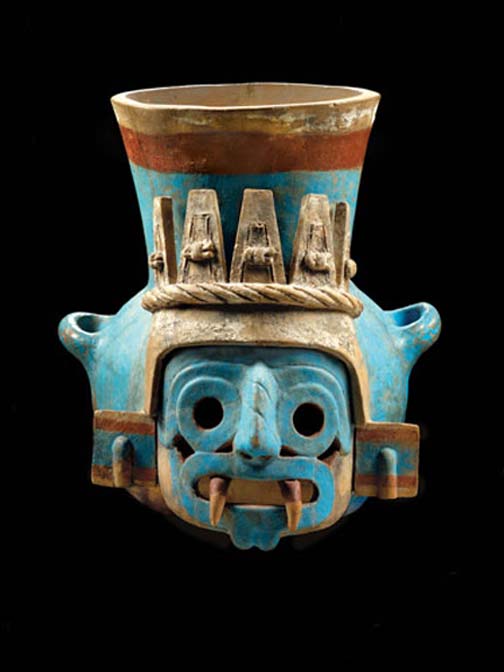

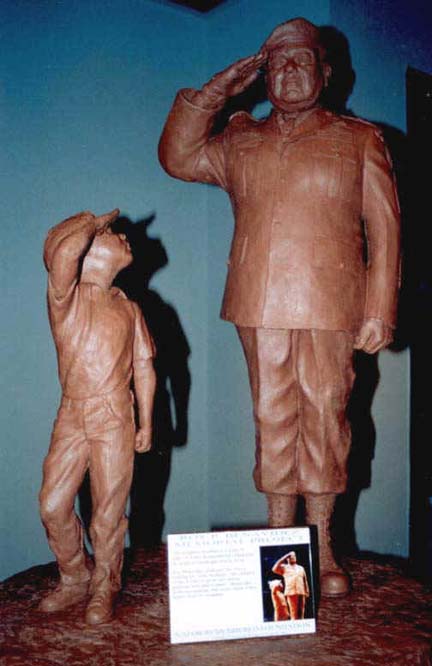
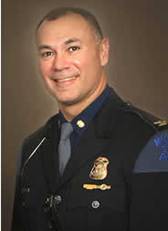
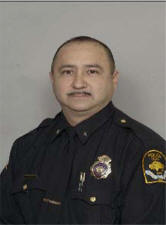
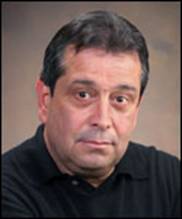
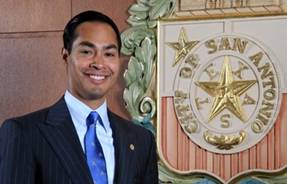
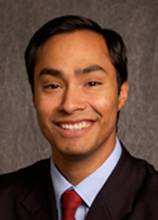
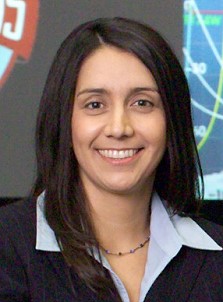
 Kerrick
later rose to flight director, an even more pressure-packed position.
Flight directors work behind the scenes on every space shuttle mission
to plan and orchestrate every task executed by the astronauts in space,
whether it’s building the International Space Station or fixing the
Hubble Space Telescope.
Kerrick
later rose to flight director, an even more pressure-packed position.
Flight directors work behind the scenes on every space shuttle mission
to plan and orchestrate every task executed by the astronauts in space,
whether it’s building the International Space Station or fixing the
Hubble Space Telescope.
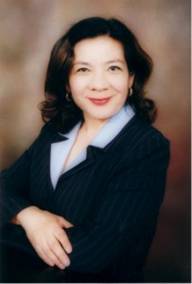
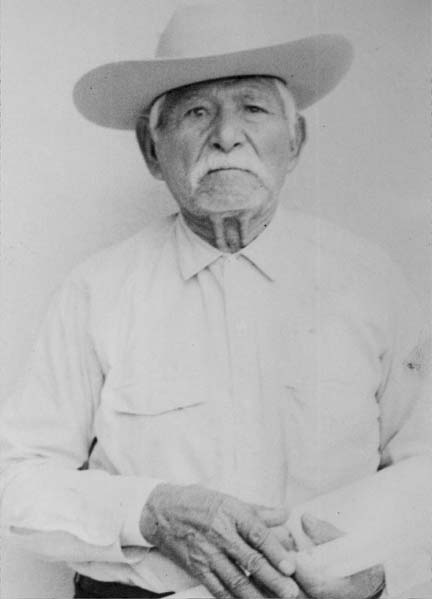
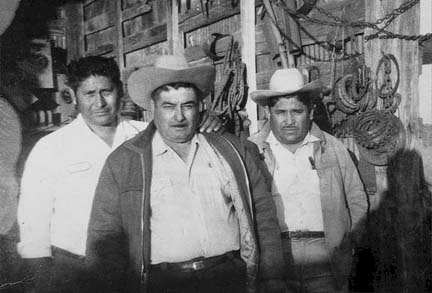
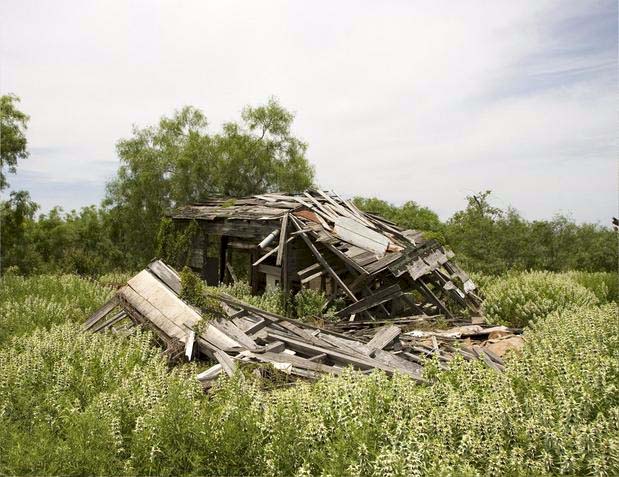
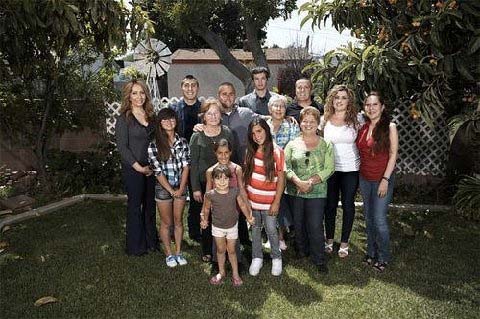
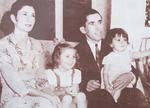
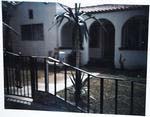
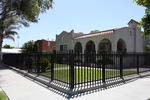

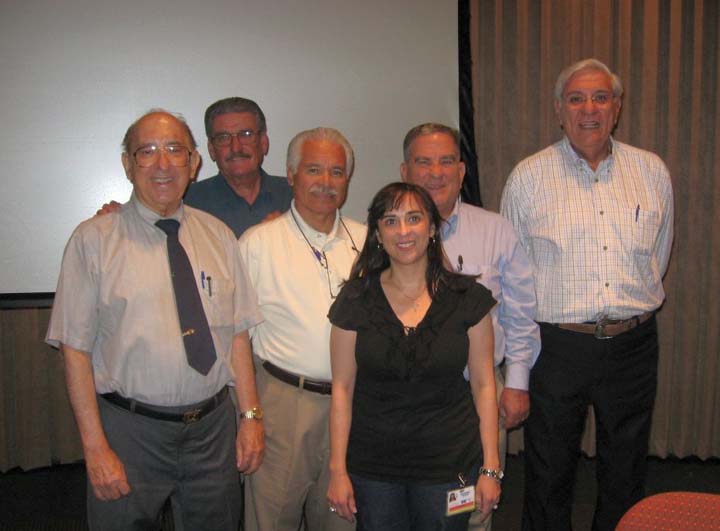
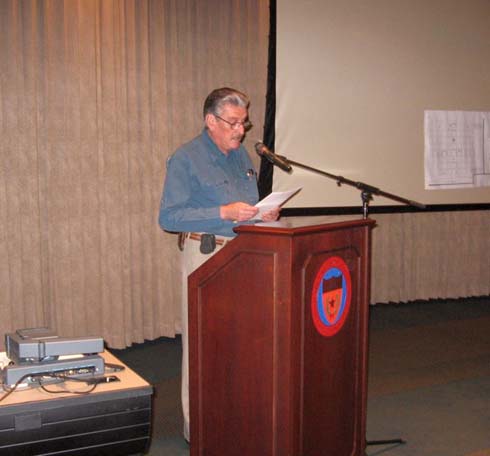
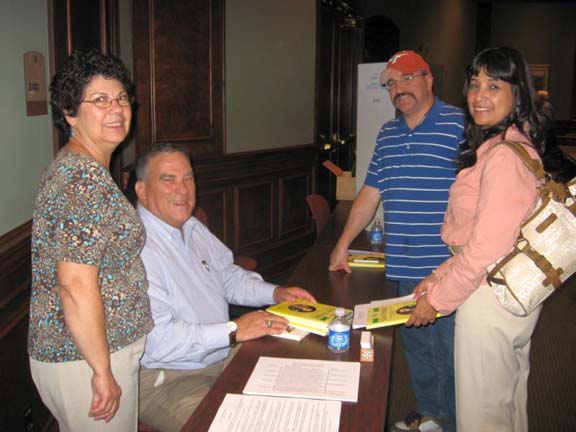
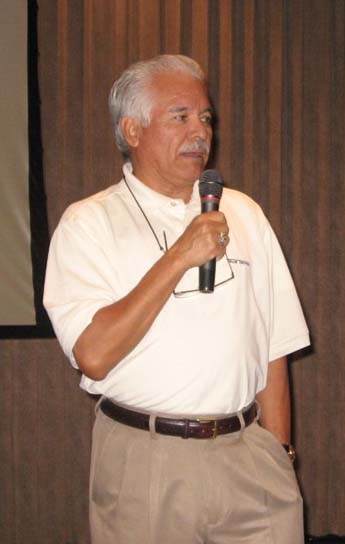 The
seminar began with a presentation by Joe Moreno, of the Laredo Public
Library.
The
seminar began with a presentation by Joe Moreno, of the Laredo Public
Library.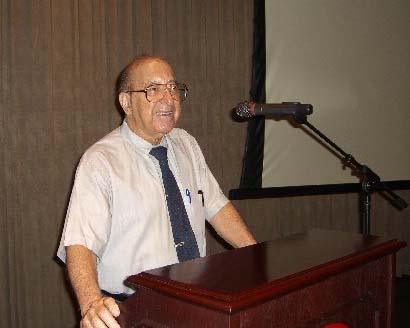
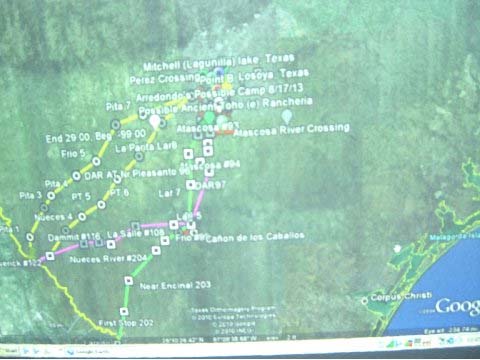
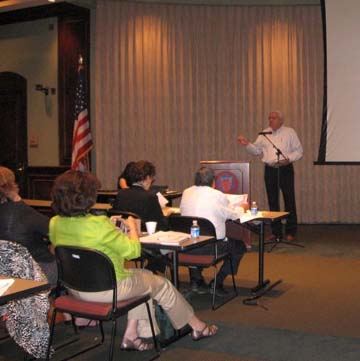
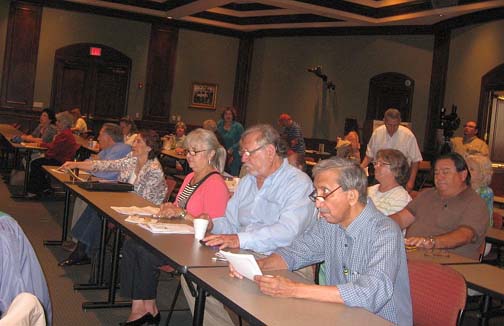
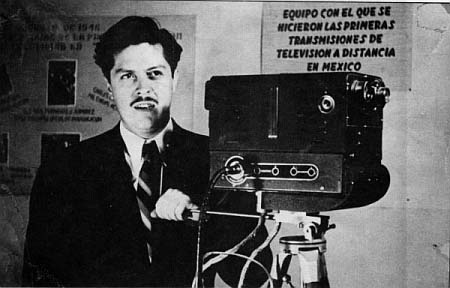 Guillermo González Camarena
Guillermo González Camarena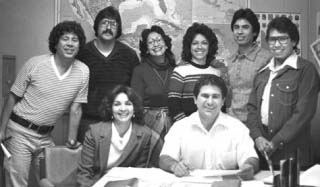
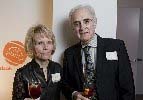
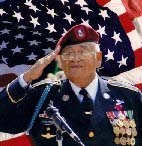
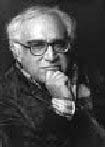
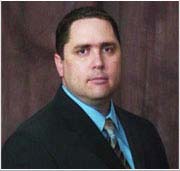 E. Coli is best known as the bacterium that can cause food
borne illnesses, but to researcher Ramon Gonzalez, E. coli
can also be an alternative energy source. Gonzalez,
the William W. Akers Assistant Professor in the chemical and
biomolecular engineering and bioengineering departments of
Rice University, received the 2010 Glycerine Innovation
Award for identifying a way to use a safe form of E. coli to
convert Glycerine into Ethanol.
E. Coli is best known as the bacterium that can cause food
borne illnesses, but to researcher Ramon Gonzalez, E. coli
can also be an alternative energy source. Gonzalez,
the William W. Akers Assistant Professor in the chemical and
biomolecular engineering and bioengineering departments of
Rice University, received the 2010 Glycerine Innovation
Award for identifying a way to use a safe form of E. coli to
convert Glycerine into Ethanol. Gonzalez and his team were able to design strains of E. Coli
that could produce a range of products from biofuels,
Ethanol, Hydrogen and organic acids. This includes a new
version of the bacterium that produces up to 100 times more
Succinate, a high-demand chemical feedstock that is used to
make everything from noncorrosive airport deicers and
nontoxic solvents to plastics, drugs and food additives.
Most Succinate today comes from nonrenewable fossil fuels,
according to the researcher.
Gonzalez and his team were able to design strains of E. Coli
that could produce a range of products from biofuels,
Ethanol, Hydrogen and organic acids. This includes a new
version of the bacterium that produces up to 100 times more
Succinate, a high-demand chemical feedstock that is used to
make everything from noncorrosive airport deicers and
nontoxic solvents to plastics, drugs and food additives.
Most Succinate today comes from nonrenewable fossil fuels,
according to the researcher.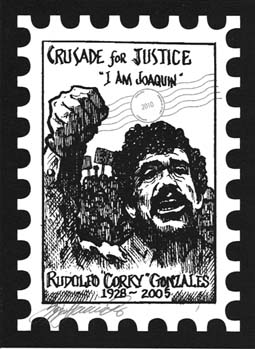
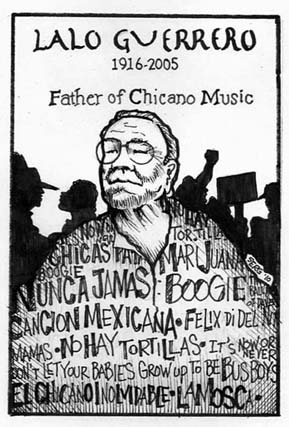
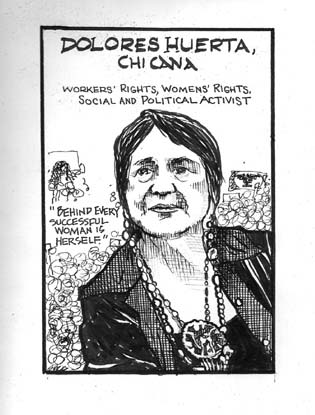
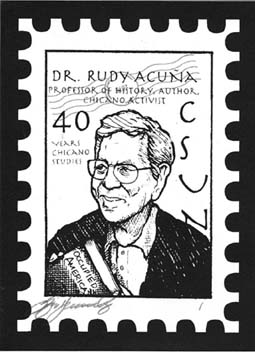
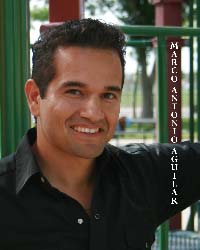 Marco
Antonio cannot remember a time when he was not involved in something
creative. Before he could even read, he was taking pencil to
paper sketching different characters and scenery. Marco grew up
in the small Caribbean nation of Belize where he studied art at St.
John’s College. It was there that he discovered and fell in
love with the acrylic medium. In Belize, he painted numerous tropical
scenes and wildlife paintings including a mural in the library at St.
John’s College. After graduation, Marco moved to California to
try his hand at acting. He quickly became a fixture in Antelope
Valley theatre and has performed in many local productions there and
in the Los Angeles area. To feed his hunger for creativity,
Marco studied everything from acting, to commercial singing, to
various styles of dance. In the meantime, painting and art took
a back seat. He ended up taking a job at an art gallery and was
trained as a conservation framer, specializing in the framing of
collectibles and antiques including valuable artwork. While
working in the gallery, Marco always felt the hunger to start painting
again. It was not until he was “volunteered” to help paint a
backdrop for a local theatre production that the fire was rekindled.
The scene was an English garden with blue skies and billowy clouds.
Constant compliments from the cast and crew made Marco reevaluate his
lost art form and he found himself once again putting brush to canvas.
Marco
Antonio cannot remember a time when he was not involved in something
creative. Before he could even read, he was taking pencil to
paper sketching different characters and scenery. Marco grew up
in the small Caribbean nation of Belize where he studied art at St.
John’s College. It was there that he discovered and fell in
love with the acrylic medium. In Belize, he painted numerous tropical
scenes and wildlife paintings including a mural in the library at St.
John’s College. After graduation, Marco moved to California to
try his hand at acting. He quickly became a fixture in Antelope
Valley theatre and has performed in many local productions there and
in the Los Angeles area. To feed his hunger for creativity,
Marco studied everything from acting, to commercial singing, to
various styles of dance. In the meantime, painting and art took
a back seat. He ended up taking a job at an art gallery and was
trained as a conservation framer, specializing in the framing of
collectibles and antiques including valuable artwork. While
working in the gallery, Marco always felt the hunger to start painting
again. It was not until he was “volunteered” to help paint a
backdrop for a local theatre production that the fire was rekindled.
The scene was an English garden with blue skies and billowy clouds.
Constant compliments from the cast and crew made Marco reevaluate his
lost art form and he found himself once again putting brush to canvas.
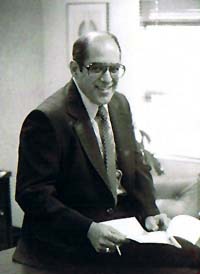

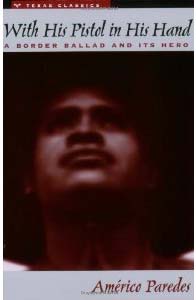
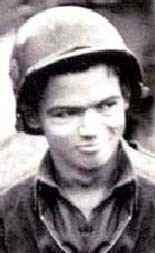
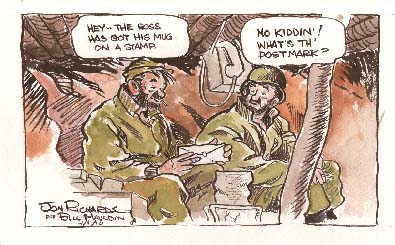

 "So
we've got to change that, because that's how you get bad, naïve
foreign policy," he continues. "That's how you get a
Congress that doesn't know how to check when a commander-in-chief is
not acting the way that he should."
"So
we've got to change that, because that's how you get bad, naïve
foreign policy," he continues. "That's how you get a
Congress that doesn't know how to check when a commander-in-chief is
not acting the way that he should." 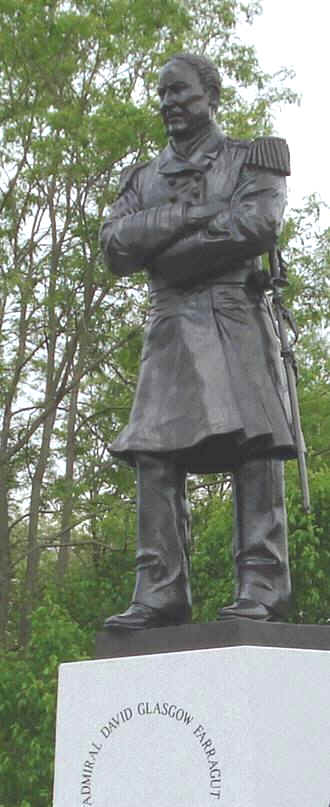 As some
of you have heard, back in early May the town of Farragut
As some
of you have heard, back in early May the town of Farragut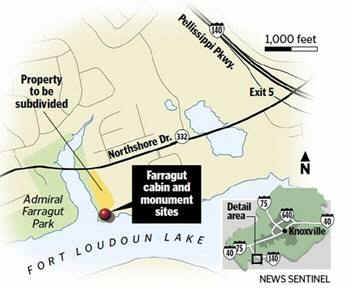
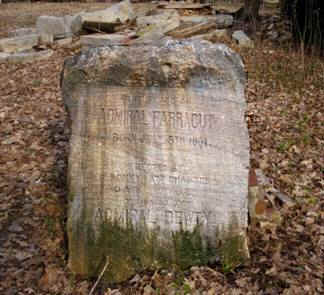
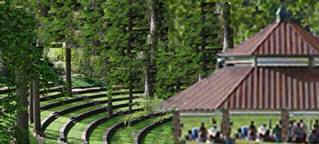
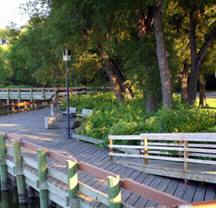
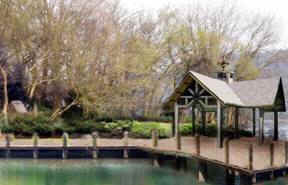
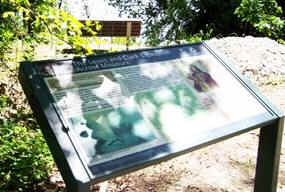
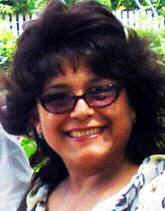 Mercedes
Strollo, Centro Hispano
Mercedes
Strollo, Centro Hispano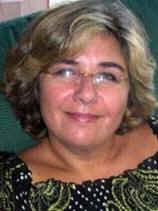 Coral
Getino, HoLa Hora Latina
Coral
Getino, HoLa Hora Latina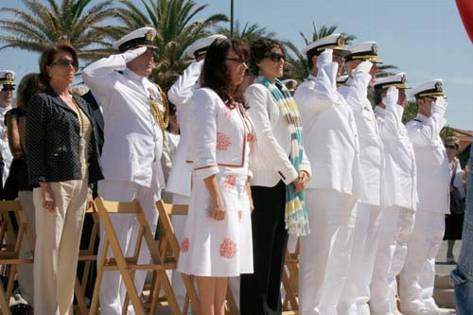
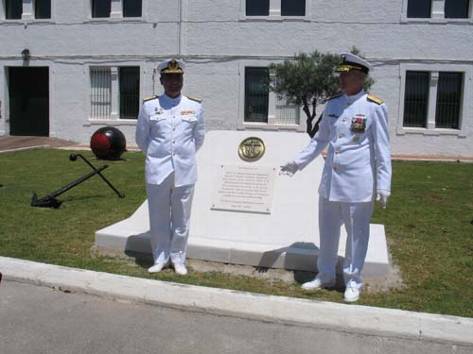
 Hispanics
have fought in the military for America’s defense in every war
fought by the United States. In recent years, historians have found new evidence that the
Americans who resided in the original colonies were not as
determined to spend time in the military after the first year of
fighting in 1776.
Hispanics
have fought in the military for America’s defense in every war
fought by the United States. In recent years, historians have found new evidence that the
Americans who resided in the original colonies were not as
determined to spend time in the military after the first year of
fighting in 1776. 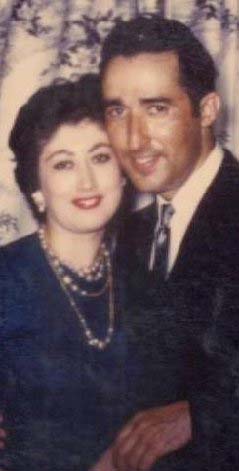
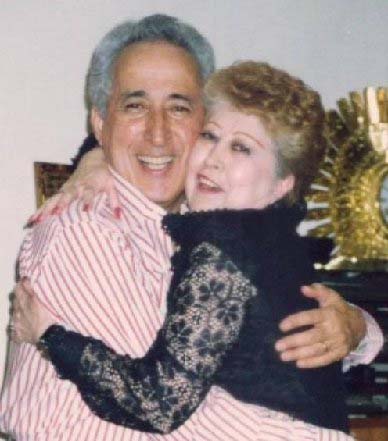
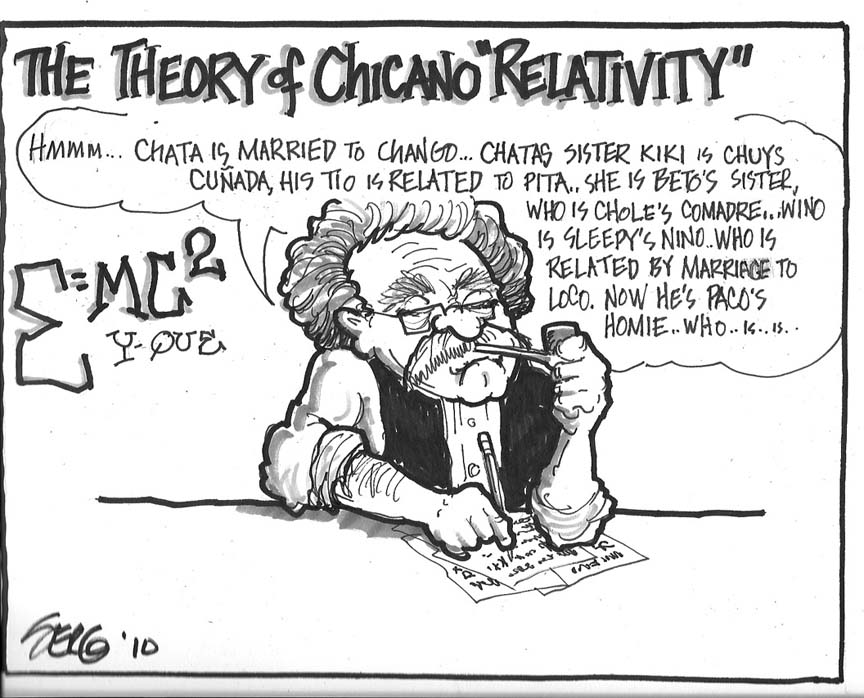
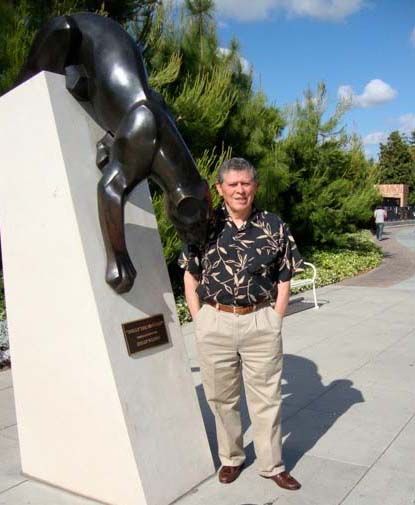
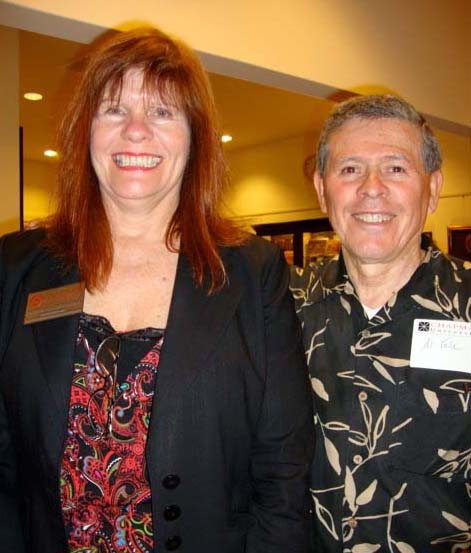
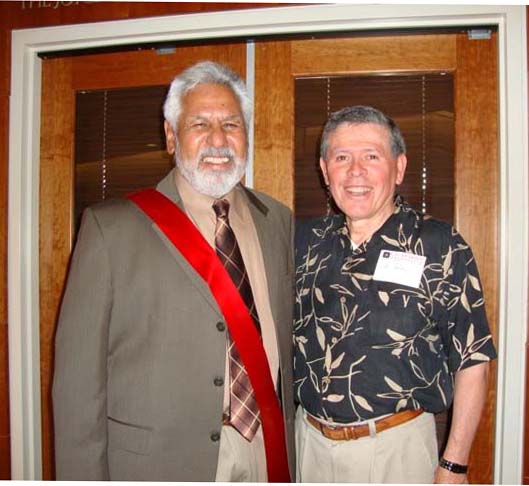
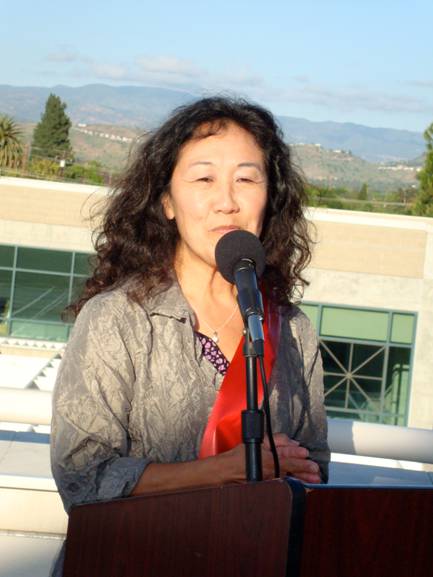
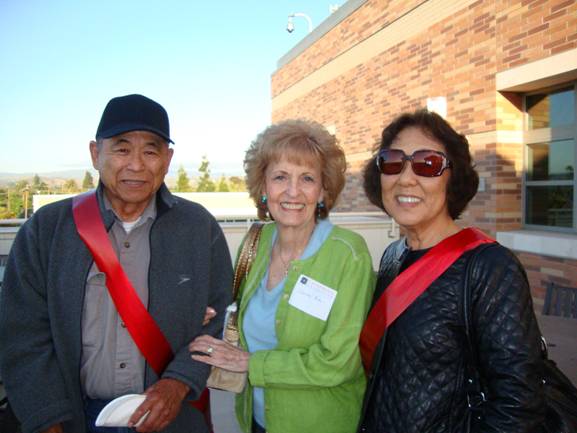
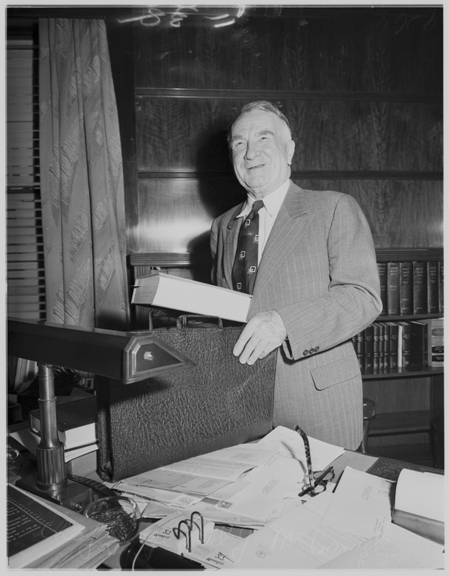
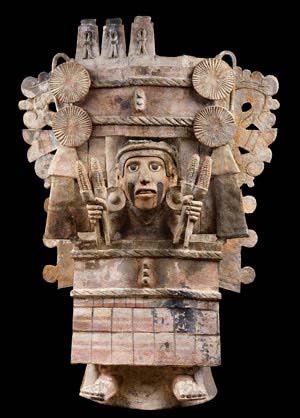

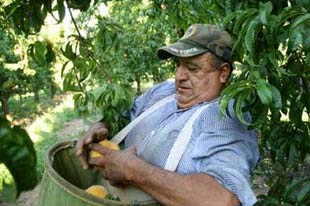
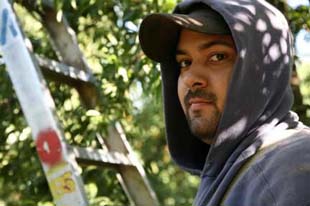

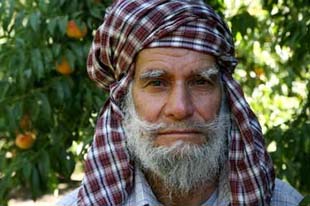
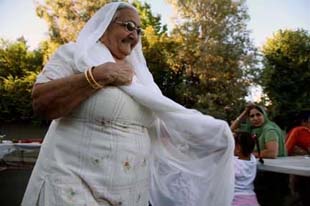
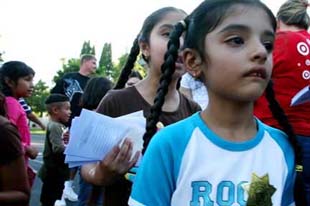
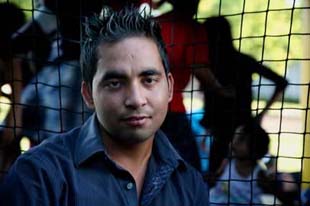
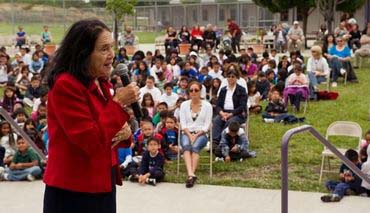
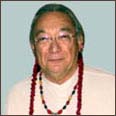
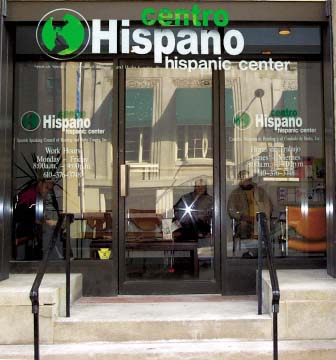 For
more than 30 years the Spanish Speaking Council of Reading and Berks,
Inc. has been the principal agency
For
more than 30 years the Spanish Speaking Council of Reading and Berks,
Inc. has been the principal agency Before joining NOW, Hinojosa was the urban affairs correspondent for CNN. Prior to joining CNN, Hinojosa spent six years as a New York-based correspondent for NPR. During this time, she also hosted
Visiones, a public affairs talk show on WNBC-TV in New York.
Before joining NOW, Hinojosa was the urban affairs correspondent for CNN. Prior to joining CNN, Hinojosa spent six years as a New York-based correspondent for NPR. During this time, she also hosted
Visiones, a public affairs talk show on WNBC-TV in New York. 
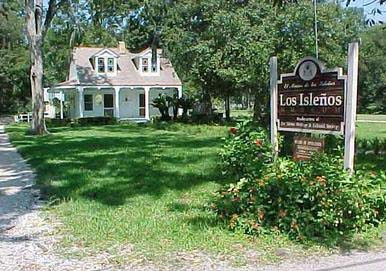 The fiesta opened with rededication ceremonies for both the
Isleño Museum and the Ducros Museum. The 30 acre complex, which
includes some nine historic buildings, has been painstakingly
rebuilt with federal recovery dollars and support from both the
parish government and private individuals.
The fiesta opened with rededication ceremonies for both the
Isleño Museum and the Ducros Museum. The 30 acre complex, which
includes some nine historic buildings, has been painstakingly
rebuilt with federal recovery dollars and support from both the
parish government and private individuals. “This is our history and our culture, and we’re proud of
it,” Robin said. “That what I’ve been doing for five
years.” Pointing to a piece of a boat he recently glued back in
place, Robin added, “Katrina wiped us out, and we’re just
putting the pieces back together.”
“This is our history and our culture, and we’re proud of
it,” Robin said. “That what I’ve been doing for five
years.” Pointing to a piece of a boat he recently glued back in
place, Robin added, “Katrina wiped us out, and we’re just
putting the pieces back together.”